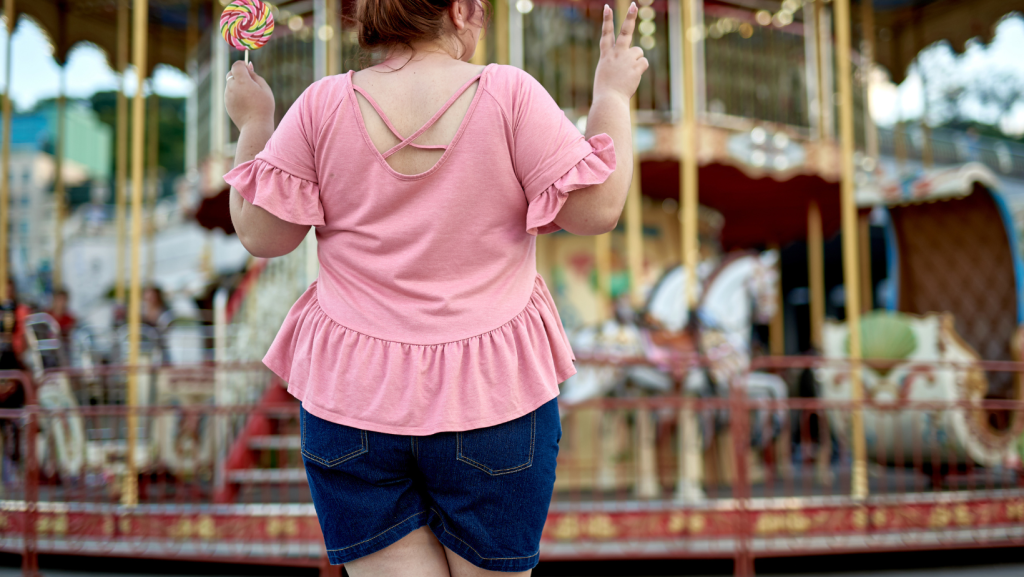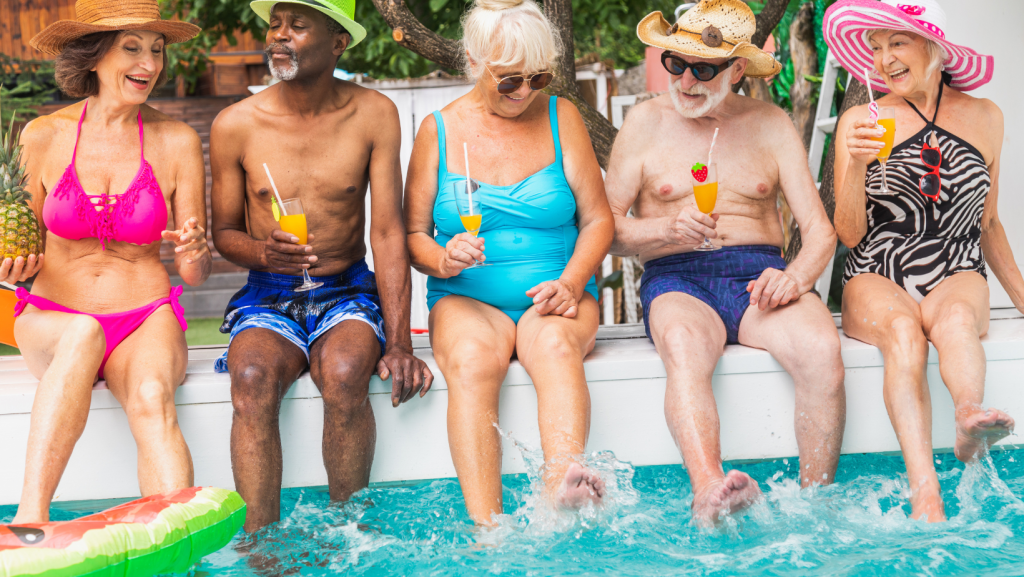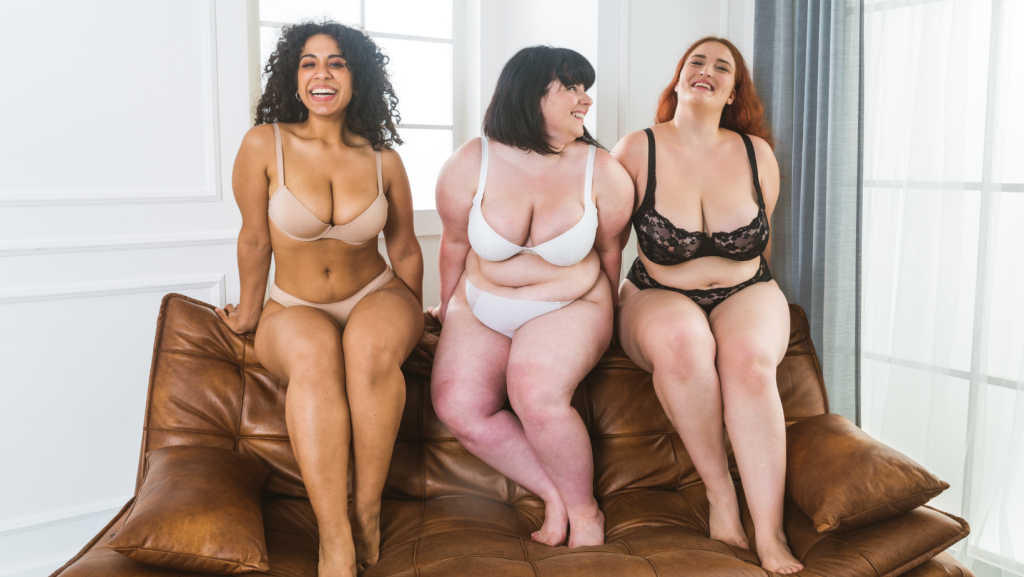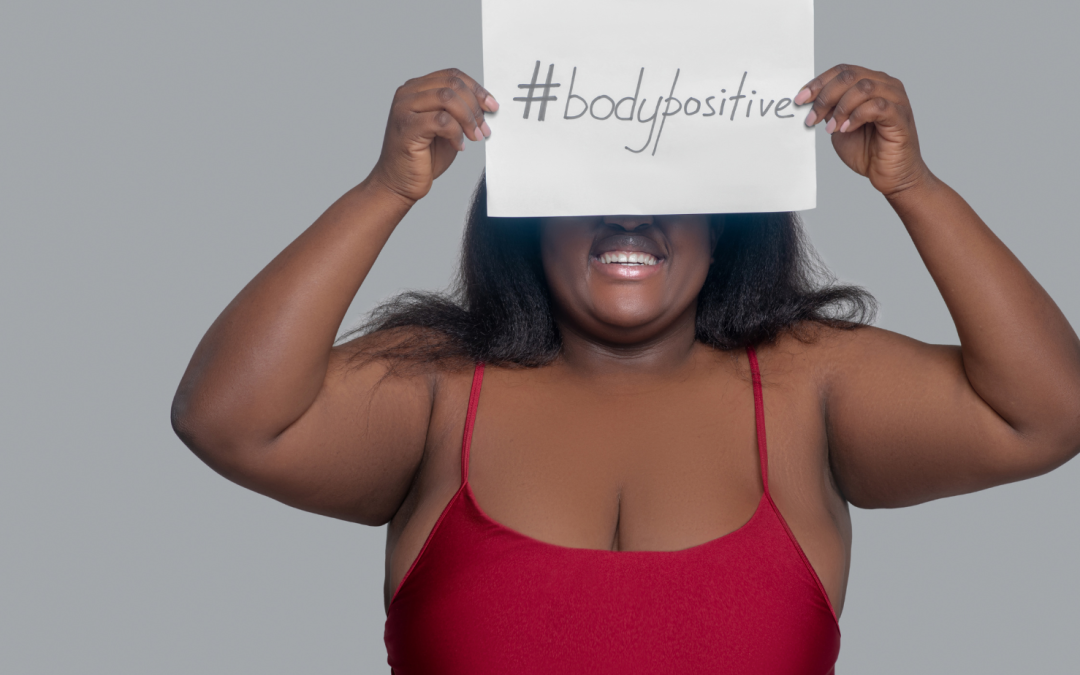Corsets, bikinis, skinny jeans, stilettos. Every culture has its version of the contrived ideal body and the clothes that should fit it. We all buy into it because it’s pumped into the very air we breathe, trying as we may to hold our breath in protest. Inclusive advertising, body positive images, anti-bullying campaigns — what, if anything, can counter a culture driven by money and media power?
How many times have you thought, “Hmmm. If only I could lose ‘x’ number of pounds or wear size ‘y’ clothing, then I’ll be happy?”
Have you ever daydreamed about being a leaner version of yourself, complete with 6-pack abs?
Would seeing images of all body sizes help you to accept your own?
(Probably not. At least not at first.)
It takes more than body positive images or affirmations to help (most) people with body image issues feel better about the bodies they have. At least at first.
It’s no news flash that the majority of women (and some men) are dissatisfied with their bodies. Many of us even take extreme measures (e.g. surgery, fasting, fanatical exercise) to change our body’s size and shape.
None of us is born dissatisfied with our weight. I don’t know about you, but I’ve never heard toddlers lament about body size or shape.

By the time kids are 8-12 years of age, however, body dissatisfaction has slithered its way into their mindset and languaging. They develop physically and emotionally in a pervasive, intensifying context of negative body image.
The messaging is equally yoked between subliminal and supraliminal. Children learn what they live — through their experiences, their senses, and their developing perceptions.
The highly plastic, rapidly connecting young brain picks up on and processes everything into a construct of reality. And body image indoctrination doesn’t escape the roadmap any more than the abc’s do.
What, if anything, can stop this messaging that continues to start earlier and last longer?
Body positivity has become a popular movement in recent years, with many people advocating for acceptance and celebration of diverse bodies.
However, some experts question whether body positive images are actually helpful for people with body image issues.
What are the messages delivered by body positive images?
- Appreciate your body, so-called “flaws” and all.
- Feel confident in your body.
- Love yourself.
- Accept your body (shape, size, muscularity).
- Enjoy the body you have.
- Refuse to beat yourself up over changes to your body due to passage of time, injury, illness, or pregnancy.
- Focus more on what your body provides you with rather than on what your body looks like.

How did body positive images become a thing?
Instagram played a major role in the popularity of the body positivity movement.
In recent years, magazines and companies have incorporated efforts to be more body positive in their publications and marketing. Some magazines, for example, have stopped airbrushing models, while companies like Dove and Aerie have developed marketing campaigns incorporating body positivity messages.
Goals of body positivity:
- challenge societal views of the body
- promote acceptance of all bodies, regardless of size, shape, color, gender, race, (dis)ability
- help build confidence and acceptance of people’s own bodies
- address unrealistic body standards
Depending on whom you ask, body positivity can mean:
- appreciating your body in spite of flaws.
- feeling confident about your body.
- loving yourself.
- accepting your body’s shape and size.
Body positivity basically means enjoying the body you naturally have. It leans into acceptance of natural and circumstantial changes like aging, pregnancy, health issues, and even some lifestyle choices.
Earlier I mentioned that reading inspirational quotes is rarely enough to improve body image.
But what if the words of people we all follow and admire could at least give you pause and make you think…”Maybe, just maybe, I really am OK as I am”?

Let the following examples sink in.
Body positive quotes/affirmations:
- “Don’t waste so much time thinking about how much you weigh. There is no more mind-numbing, boring, idiotic, self-destructive diversion from the fun of living.” —Meryl Streep
- “Stop spending all day obsessing, cursing, perfecting your body like it’s all you’ve got to offer the world. Your body is not your art, it’s your paintbrush.” —Glennon Doyle
- “Everybody has a part of her body that she doesn’t like, but I’ve stopped complaining about mine because I don’t want to critique nature’s handiwork … My job is simply to allow the light to shine out of the masterpiece.” —Alfre Woodard
- “YOU ARE WANTED. Big, small, tall, short, pretty, plain, friendly, shy. Don’t let anyone tell you otherwise, not even yourself. Especially yourself.” ―Jennifer Niven
- “Your self-esteem won’t come from body parts. You need to step away from the mirror every once in a while, and look for another reflection, like the one in the eyes of the people who love you and admire you.” —Stacy London
By better understanding the effect of socio-cultural influences, the hope is that people develop a happier, more self-compassionate relationship with their bodies.
Perhaps reading and reminding yourself of body positive affirmations can be one step in the direction toward body positivity?
What if all of us spent less time criticizing our bodies?
Mother nature and your family tree did nothing intentional to hurt you.
Most often we need to unlearn quite a bit before dignity replaces the shame.
Why are people opposed to body positivity?
A popular argument against use of body positive images is that they can be triggering for those who have a history of disordered eating or poor body image. Images of bodies that are different from their own can remind people of their insecurities.
Additionally, some people feel pressure to conform to the celebrated body types, rather than feeling accepted for who they are and what they look like.
Especially for those who struggle with body image issues, the impact of body positive images can be a complex and emotional topic. Sometimes the last thing people need is an unhelpful reminder of past pain and struggle.

Why are other people in support of body positivity?
Proponents of body positivity believe that seeing diverse bodies in the media can empower people who feel ashamed of their own bodies. It can also help to break down societal norms and stereotypes about what a “desirable” body type is.
Another perspective is that body positivity is not a one-size-fits-all solution and that it should be approached with nuance and sensitivity. People will vary in their reaction to body positivity messages.
Whether body positive images are helpful for people with body image issues is a not a yes or no answer. Some people may find such images empowering, while others may find them triggering.
So consider an individual’s unique experiences when discussing body positivity and its impact.
Regardless of how body positivity images land for you, the whole purpose is self-acceptance and self-love.
Breaking down societal norms that dictate what a “desirable” body should look like helps give people freedom to become their authentic selves.
Regardless of where someone falls on the believing-in-body-positivity spectrum, everyone’s journey is valid and worthy of respect and understanding.
And all bodies — from cradle to grave — are worthy of the same.
